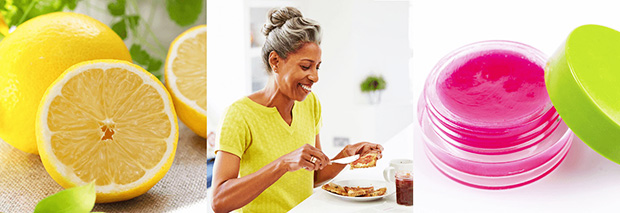Nomenclature of Ascorbic Acid
Common name: Vitamin C vitamin
Chemical name: L-ascorbic acid
Brand: ascorbic acid
United States brand: Asorbicap
Foreign brand: C-Long
Abbreviation: VIT C
NSC Code: 33832
Chemical and physical properties
Ascorbic acid (vitamin C) is a water-soluble vitamin. It is formed as a white or slightly yellow crystal or powder with a slightly acidic taste. This product is anti-corbutic. It gradually darkens when exposed to light. Ascorbic acid is stable in air when dry, but oxidizes rapidly in solution.
Ascorbic acid (vitamin C) is freely soluble in water. Slightly soluble in alcohol. Soluble in chloroform, ether and benzene. The chemical name for ascorbic acid is L-ascorbic acid. Its experimental formula is C6H806 and its molecular weight is 176.13.

History
Outbreaks appear to be exacerbated during the crusades of the 13th century
The first outbreak of scurvy occurred during the crusades of the 13th century and were a particular oral plague among sailors and explorers. One hundred of the 160 crew of Vasco da Gama died of scurvy in 1498. Admiral Sir Richard Hawkins wrote in 1593: “What I found very useful in curing this disease was the consumption of oranges and lemons.”

These observations, followed by a clinical trial controlled by Captain Lind on May 20, 1747, in which 12 patients with scurvy were tested for various randomized treatments, yielded surprising results. All the results showed the direct effect of oranges and lemons in the treatment of this disease!
However, at that time they still had no clue what was in these citrus fruits. Finally in the 1930s, Albert Czent discovered the chemical ascorbic acid – also known as vitamin C – that enabled the body to use carbohydrates, fats and proteins effectively. His discovery was one of the foundations of modern nutrition.
What is ascorbic acid?
Ascorbic acid is a over-the-counter medication used to treat the symptoms of ascorbic acid deficiency and acidification of the urine, as well as as a dietary supplement. Ascorbic acid may be used alone or with other medicines. Ascorbic acid belongs to a group of drugs called vitamins and water-soluble.
Ascorbic acid is a powerful reducing and antioxidant agent that fights bacterial infections, detoxification reactions, and collagen formation in fibrous tissue, teeth, bones, connective tissue, skin, and capillaries. Ascorbic acid or vitamin C is not found in citrus fruits and other fruits and vegetables and is not produced or stored by humans and should be included in the diet.
Ascorbic acid is an important oxidation factor in plant and animal systems. Most animals produce enough ascorbic acid. However, for those who do not have the enzyme needed for synthesis, ascorbic acid is a real vitamin. Deficiency of this acid in the body causes scurvy in humans, which will be associated with growth disorders and hormonal problems.
The data suggest that the optimal intake of ascorbic acid for adults should be 75-90 mg, and in some cases may be higher.
Ascorbic acid is the strongest enhancer of iron absorption. Synthetic vitamin C increases iron absorption by the same amount of essential ascorbic acid found in fruits, vegetables and fruit juices.
Erythorbic acid, a derivative of ascorbic acid, is widely used as an antioxidant in processed foods in industrialized countries. Although it has low activity of vitamin C, it seems that its boosting function in absorbing iron is almost twice that of ascorbic acid.
Ascorbic acid, also known as vitamin C or ascorbic acid L, is a natural organic compound that has antioxidant properties.
Ascorbic acid is found in plants and foods such as citrus fruits, tomatoes and green vegetables. This material has other applications in the photo industry and in some specialized scientific projects. Ascorbic acid is also used in the manufacture of plastics and water treatment.
Is ascorbic acid the same as vitamin C?
Ascorbic acid is one of the known forms of vitamin C. It is a water-soluble vitamin that helps keep our skin, hair and bones healthy. Most fruits and vegetables contain ascorbic acid and have a medicinal form.

Benefits of ascorbic acid
Vitamin C is an essential nutrient found mainly in fruits and vegetables. The body needs ascorbic acid to form and maintain bones, blood vessels and skin. Ascorbic acid also heals cuts, scratches and wounds. Helps fight infections. Prevents the conversion of irritants in smoke, tobacco smoke and some foods to carcinogens. It seems to reduce the risk of high blood pressure and heart disease. Helps regulate cholesterol levels. Prevents the development of scurvy. Reduces the risk of cataracts and helps absorb iron.
Some of the benefits of ascorbic acid:
- Enhances safety performance in optimal condition
- It is important in the production of collagen, a substance that promotes healthy skin, nails and hair
- Supports healthy tissue and cartilage formation, this is an advantage in wound healing and wound healing
- It plays an important role in detoxifying the liver, in addition to its antioxidant properties to help protect against the toxic effects of heavy metals.
- Helps increase glutathione, a powerful antioxidant needed to support phase II liver detoxification
Benefits of collagen production, its antioxidant status, and immune support make vitamin C an important nutrient for surgical patients to support wound healing.
Ascorbic acid is a nutrient that the human body needs in small amounts to function and stay healthy. As an antioxidant, ascorbic acid can help prevent cell damage caused by free radicals, unstable molecules that can damage cells.
According to the US National Cancer Institute, ascorbic acid can help the human body fight bacterial infections and help build collagen, an important protein in fibrous tissue, teeth, bones, skin and capillaries.
Ascorbic acid is also used to prevent and treat scurvy, a condition that causes fatigue, swollen gums, joint pain, and poor wound healing from vitamin C deficiency. Ascorbic acid is also found in a group of drugs called antioxidants.
Uses of ascorbic acid

- Food and drink
Vitamin C is found naturally in many fresh fruits and vegetables, from oranges and grapefruits to broccoli, Brussels sprouts and tomatoes. Vitamin C is reduced in some foods by heat, boiling water, or air pressure, which is why many foods are fortified with ascorbic acid to help you replenish the vitamin content that may be lost this way.
Ascorbic acid is often added to fruit juices, cereals, fruit-flavored candies, dried fruits, cooked meats, and frozen fruits to enrich or enhance the flavor of fortified citrus fruits.
Ascorbic acid also acts as a preservative to prevent spoilage of foods such as bread, cooked meats, jams and jellies.
- Cosmetics and personal care products
Cosmetics and other personal care products may contain acidic forms of ascorbic acid, such as calcium ascorbate, magnesium ascorbate, magnesium ascorbate phosphate, sodium ascorbate, and sodium ascorbate phosphate which act as antioxidants to slow down the expiration time of the final product due to exposure to chemicals as well as to control the pH.
- Industry and production
Ascorbic acid is used in a wide range of industrial and manufacturing applications, including as a developmental and preservative in photo production and water purification, where it used to help eliminate the taste of iodine in drinking water and desalination plants.
Scientists are also using ascorbic acid in fluorescence microscopy, an essential tool for cell biology. In this application, ascorbic acid helps increase fluorescence and exposes cells to researchers. In the production of plastics, ascorbic acid helps to cause the chemical reaction of plastics.
What are the general goals of ascorbic acid?
Ascorbic acid is part of a group of drugs called antioxidants. This acid is needed to help heal wounds, boost the absorption of iron from plant foods and support the immune system.

What are the side effects of ascorbic acid?
Vitamin C is likely to be safe for most people when taken orally in the recommended doses.
Common side effects of ascorbic acid include mild transient pain at the site of intramuscular or subcutaneous injection.
Other side effects of ascorbic acid include:
- Nausea
- Vomit
- Heartburn
- Stomach cramps
- Headache
Do all vitamins C contain ascorbic acid?
Almost all vitamin C supplements on the market are made from ascorbic acid. Many fruit juices and products, even many health food store versions, contain ascorbic acid. If a product is labeled “high in vitamin C,” consumers will usually buy more.
We hope that in this article you are familiar with the sorbic acid of this important and practical substance. In future articles, we will answer some of the most important and common questions about it.
Related article :
